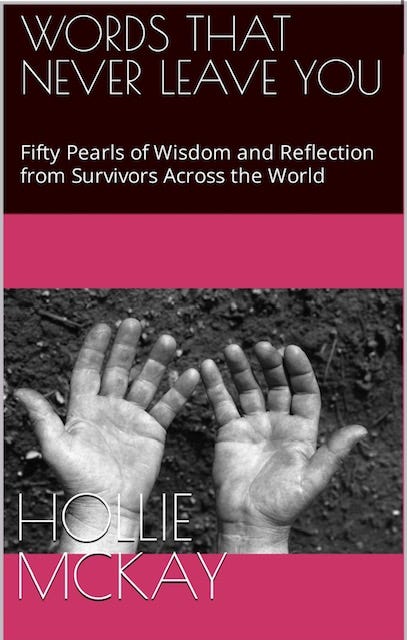Here’s a little-known fact.
One hundred twenty-five years ago, German-based pharmaceutical giant Bayer, famous for developing aspirin, brought to market a much more robust painkiller to the United States. It was called heroin, borrowed from the German word translating to “heroic.” Bayer promoted the drug as safe for children, freely available to anyone over eighteen, and touted as a remedy for everything from asthma, epilepsy and stomach cancer to coughs, colds and schizophrenia.
Sales soared, thanks to the addictive nature of the substance magnified by little understanding and cozy connections to Washington. And in many ways, it marked the beginning of a deeply entrenched “pharmaceutical-industrial complex,” also known as the “medical-industrial complex” or “Big Pharma,” permeating the United States and its healthcare industry today. While the phrase is routinely thrown around and often in the guise of wayward conspiracy theories, there is no denying that this is a genuine concept – and one with profits over people.
So, what exactly does this complex – first coined in a 1969 issue of the Bulletin of the Health Policy Advisory Center detailing its apparent conflict of interest – mean?
The New England Journal of Medicine describes the medical-industrial complex as the “rise of a huge new industry that supplies healthcare services for profit,” which “may be more efficient than its nonprofit competition,” but in doing so, creating “the problems of overuse and fragmentation of services, overemphasis on technology, cream-skimming, and exercising undue influence on national health policy.”
“Big Pharma” is a specific but perhaps most influential sector of this, defined as “major multinational pharmaceutical companies collectively as a sector of industry” and among the “most profitable industry in America.” In other words, the sicker you are, the more these large-scale companies can bolster their bottom lines and the less likely the industry is to promote prevention and optimal health.
And, of course, that corporate greed, first and foremost, hurts the patient. Companies can alter and price-gouge drugs at their discretion, impacting the most vulnerable who may rely on a particular medicine to save their life. As a result, the United States spent nearly twice as much as the ten following high-income countries on medical care and performed less well on many population health outcomes. A 2018 study on the Jama Network found that the cost of pharmaceuticals – particularly super-pricey patented drugs – comprises about fifteen percent of U.S. healthcare expenditure, the highest of any high-income nation.
Due to these inflated prices, patients often cannot afford their monthly medications. As a result, patients and those who depend on them experience long-term poverty and a lack of resources.
While many politicians and lawmakers rely on the deep-pocketed sector for donations (in 2018, pharmaceutical companies spent more than $283 million in lobbying dollars in exchange for influence) and thus keep tight-lipped on the issue, now and then, someone dares speak out. For one, former President Trump did deride pharmaceutical manufacturers as “getting away with murder” with price-gouging practices and charging much higher amounts than in other countries. However, one only needs to turn to a piece of 2003 legislation – written mainly by the industry itself – to determine how and why this has become the case.

The law, the Medicare Prescription Drug, Improvement, and Modernization Act of 2003, publicized by the George W. Bush administration as “modernizing” the Medicare system, essentially prevented the federal government from soliciting bids for the production of drugs and medical devices, even though this is standard practice in the contract arena from defense spending to humanitarian outreach. The law enabled pharmaceutical giants to charge whatever they desired from medicines in the Medicare and Medicaid programs. And using your tax dollars, the federal government could only capitulate.
However, the dominance of the for-profit healthcare system doesn’t only harm patients; it also hurts physicians and medical professionals. Just like these conglomerates can exercise influence over politicians with campaign donations, pharma can also fund research with the unspoken expectation of a favorable outcome and prompt prominent and otherwise respected medical journals to publish one-sided studies. This then sways a whole new generation of aspiring or early career professionals. Furthermore, this persuades doctors to promote their products – sometimes for undisclosed compensation – and other times because professionals are misled to believe the products may be more advantageous than reality. Even continuing education and board certification, routinely required by working physicians, can be sponsored by pharmaceutical and healthcare companies, thus engendering a subconscious slant.
Furthermore, you fund these corporations in more ways than you may realize. Corporations also receive public, taxpayer grants to conduct research at university and government labs, enjoy significant tax credits and incentives in the quest to innovate, only to then privatize and patent (which offers a further market monopoly) any breakthroughs before returning to the fold and charging patients and governments through-the-roof.
For example, more than one million Americans are born with Type 1 diabetes, whereby the body can’t produce insulin. Without the pharmaceutically produced vials, glucose accumulates to deadly levels. However, this life-saving drug has tripled in cost over the last ten to fifteen years, according to a 2018 study commissioned by the Congressional Diabetes Caucus. Subsequently, many sufferers have admitted to the potentially fatal practice of “insulin rationing.” And then there is the billions of dollars injected, no pun intended, into the industry to quickly develop a COVID-19 vaccination. You paid, although they profited and continue to keep the astronomical profits to this day. This monopolization should not be the case for the powerhouse of the world.
Overall, the price of prescription drugs continues to rise despite these taxpayer subsidies. At the same time, these companies expand profit margins well into the millions, as evidenced by the Government Accountability Office (GAO), which reported that “among the largest 25 companies, annual average profit margin fluctuated between 15 and 20 percent.” The top-brass also benefit with hefty salaries, all while Americans spend some $65.8 billion out-of-pocket for prescription medicines, according to Pew Charitable Trusts, which leads to high levels of debt and then drives a range of other lifestyle and socioeconomic problems.
Nonetheless, this isn’t an industry we can do away with – of course, we need the pharmaceutical arena to sustain our lives and continue to evolve, even if we are weary of their interests. I am definitely not for the government handling all the research, development, drug trials and production – that would be a disaster. But for the public and private sectors to work together for the benefit of the country and its people, there must be a much stronger semblance of right and wrong. It is unacceptable in the nation that purports to be the world leader for citizens to die or run into astronomical debt at the whim of the for-profit oligarchs that put profits before patients. Banning Big Pharma from the lobbying world would be an achievable move to temper the conflict of interests and restrict Congress from accepting campaign donations from entities connected to the industry. After all, Congress has done next to nothing to address the growing problem in recent decades.
Next, we need to revert the model to what it should have been all along: curing or preventing patients should be the default and sustainable mode of operations.
PLEASE CONSIDER A PAID SUBSCRIPTION TO THIS SUBSTACK TO HELP KEEP INDEPENDENT, AGENDA-FREE WRITING AND JOURNALISM ALIVE. THANK YOU SO MUCH FOR YOUR SUPPORT.
Subscribed
For speaking queries please contact meta@metaspeakers.org
Follow me on Instagram and Twitter for more updates
HOLLIE’S BOOKS (please leave a review)
** Short read of meaningful lessons gleaned from the ordinary forced to become extraordinary
Order your copy of “Afghanistan: The End of the US Footprint and the Rise of the Taliban Rule” due out this fall.
For those interested in learning more about the aftermath of war, please pick up a copy of my book “Only Cry for the Living: Memos from Inside the ISIS Battlefield.”
If you want to support small businesses:





